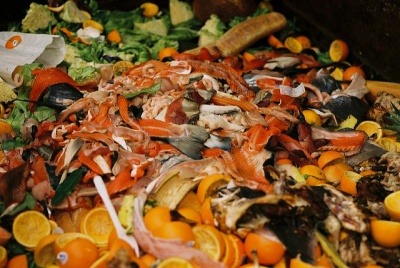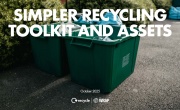Global food waste could rise a third by 2030
Global food waste could rise by almost a third by 2030, with more than two billion tonnes of food being binned annually, according to the Boston Consulting Group (BCG) – an amount worth around $1.5 trillion dollars (£1.17 trillion).
With the profile of plastic waste experiencing a meteoric rise over the past year, food waste appears to have taken a bit of a backseat, but the issue remains pressing. According to the UN, around 1.6 billion tonnes of food is wasted every year around the world at a cost of $1.2 trillion (£930 billion). The level of waste demonstrates the size of the task ahead to achieve the UN Sustainable Development Goals’ target of halving food waste by 2030.
Not only is food waste generation terrible for the environment, accounting for eight per cent of global greenhouse emissions, according to the UN, but in a world where some 870 million people are undernourished it is also ethically unconscionable.
Quantifying the food waste challenge
As part of its report, ‘Tackling the 1.6-billion-ton food loss and waste crisis’, the BCG examined where exactly food waste was being generated throughout the food value chain, identifying five drivers for change to address these areas.
According to the report, the stage where the most food waste is generated is the production stage, with 500 million tonnes of waste created every year, followed by the handling and storage stage (350 million tonnes), the consumption stage (340 million tonnes), the distribution and retail stage (200 million tonnes) and the processing and packaging stage (160 million tonnes).
In terms of the financial value of generated food waste, the consumption stage is by far the most profligate, with every kilogramme of food waste generated worth on average $500 (£387.51), followed by the production stage where the average is $230 (£178.25) per kilogramme.
Using a food loss and waste model devised by BCG, it is predicted that the volume of food waste generated annually will rise by 1.9 per cent every year between 2015 and 2030, while the value of food waste generated will rise by 1.8 per cent every year, leading to 2.1 billion tonnes of food being wasted every year by 2030, at a value of $1.5 trillion dollars.
Five drivers of change
Despite the grim outlook for global food waste, BCG has identified five areas where concerted action from stakeholders, including governments, NGOs, farmers and food retailers, could drive a $700-billion reduction in food waste generation.
- Increasing awareness of food waste throughout the value chain could reduce the value of food waste generated every year by $260 billion (£201.5 billion).
- Improving supply chain infrastructure, such as the cold storage of food products in developing markets, could reduce the global food waste problem by $150 billion (£116.25 billion) annually.
- Increasing supply chain efficiency through the use of digital tools to allow better matching of supply and demand and the tracking of loss and waste, for example, could reduce the issue by $120 billion (£93 billion) every year.
- More collaboration and coordination between stakeholders could increase efficiency and reduce loss and waste, saving $60 billion (£46.5 billion) of food waste annually.
- A favourable policy environment that incentivises the minimization of food waste through the tax system, for example, and a harmonization of food standards across markets could reduce waste by $110 billion (£85.25 billion) annually.
The report recommends that businesses take a number of actions, depending on their resources, across the five areas in order to drive change, while setting clear goals and targets against which impact and progress can be measured. The metrics used to measure said progress should be shared in order to ensure monitoring and reporting best practice is spread across the industry.
UK action
The BCG report comes as the UK seeks to step up its efforts to combat food waste. The Waste and Resources Action Programme (WRAP) estimates that around 10 million tonnes of food is wasted every year in the UK, 60 per cent of which is avoidable.
Earlier this year Defra opened a £500,000 Food Waste Reduction Fund for organisations working to increase the redistribution of surplus food in England. The fund was launched at a conference for the Courtauld Commitment 2025 – a voluntary agreement bringing together representatives of the food system to reduce food and drink waste by 20 per cent by 2025.
The fund is being administered by WRAP, with grants ranging from £20,000 to £75,000 aimed at not-for-profit organisations that redirect surplus food from food businesses to charities providing meals for people in need.
This year’s annual review of Courtauld 2025 revealed that 24 organisations joined the voluntary agreement in 2016/17, bringing the total number of signatories up to 156 and demonstrating the food industry’s desire to tackle the issue of food waste. The first progress report is expected in 2019.
Supermarkets and retailers have been taking steps to reduce food waste themselves over the past year or so, with Tesco recently being named by food waste campaign group Feedback as the best supermarket for food waste reduction. However, Sainsbury’s recently dropped its flagship food waste reduction initiative, ‘Waste Less, Save More’, due to poor results from its trial in the town of Swadlincote.
You can read the report, ‘Tackling the 1.6-billion-ton food loss and waste crisis’, in full on the BCG website.










